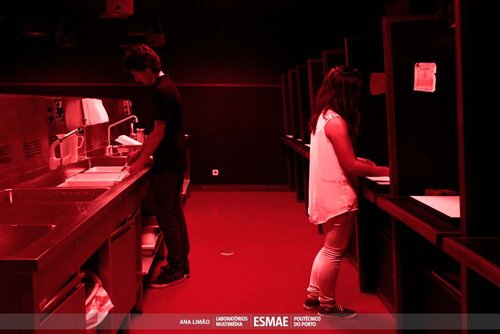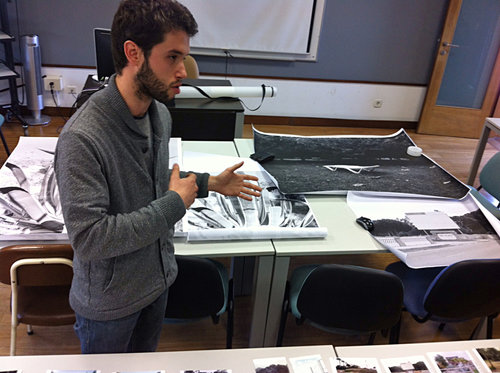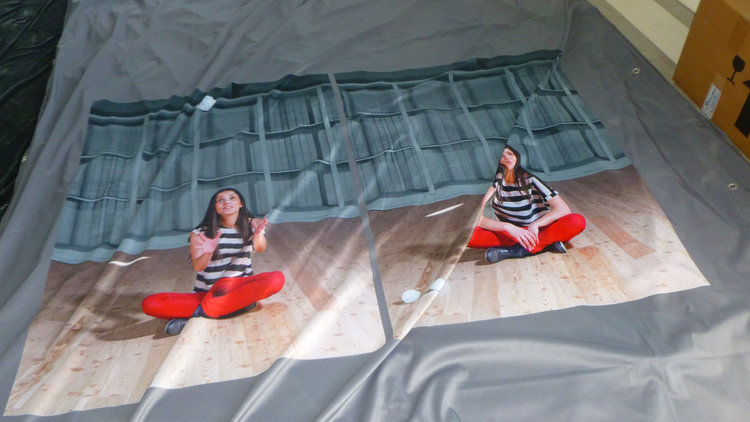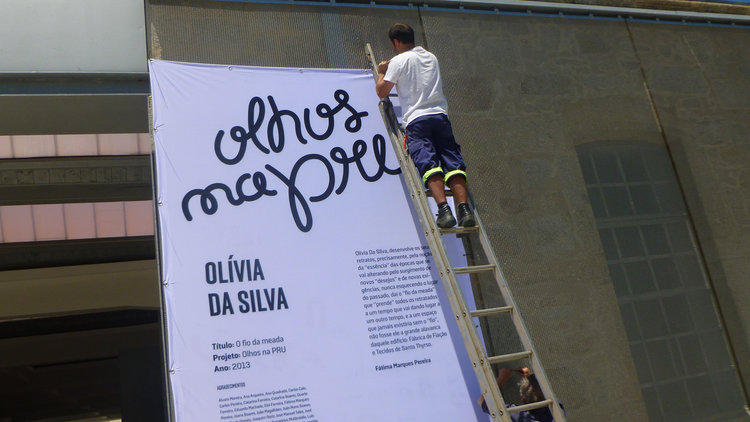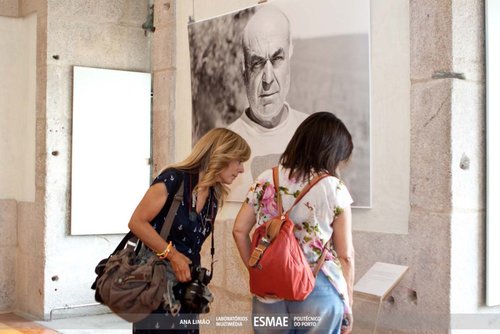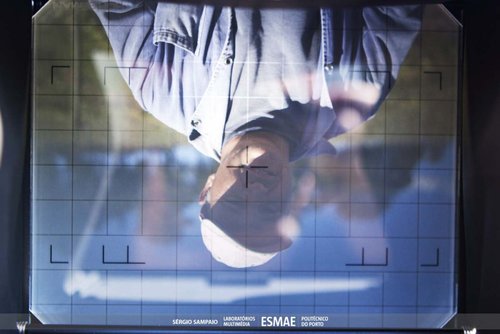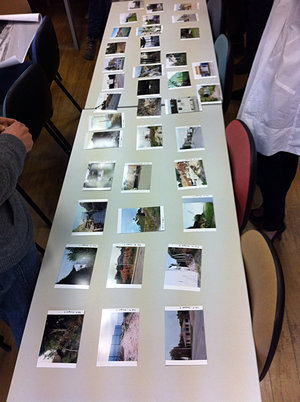PHOTOGRAPHER, SÉNIOR LECTURER AT ESMAE-IPP
BY PEDRO LEÃO AND MARIA NETO
PL_MN: Tell us about your background, where and when did you study photography, who were your teachers, who influenced you the most?
ODS: As part of my own development I studied photography as a research student to both masters and doctorate levels at the University of Derby (UK). My references as a profissionals, lectures of Photography ‘s Manuel Silveira Ramos, José Soudo, Fernando Veludo, Luís Pavão, Karen Knorr, Jean Baird, Val Wiliams, Steve Edwards, Oded Shimson between others. I was fortunate to receive support from Lisbon Calouste Gulbenkian Foundation, from the Portuguese Photography Center (CPF), from the polytechnic Of Porto and collegueas, I have been working in ESMAE since 1992, and currently, I am a member of the research group in the European Research Center of Photography ECPR at the University of South Wales (UK). I am also a Research Member of NIMAE from i2ADS, Research Center of Art, Design and Sociology of Fine Arts School of Porto, FBAUP.
PL_MN: What was your first teaching experience? What directed you towards a teaching career?
ODS: My first teaching experience was Philosophy at a number of secondary schools across this region. I launched my own photography group/club in Espinho, and I came to teaching photography at this higher level as a direct result of my work as a photographic journalist for the local newspaper Maré Viva from Espinho, and later in national newspaper Público. At the beginning, I was teaching and working for the newspaper, and it is the teaching that has eventually taking over as a career. Within this context I have been involved in several photography festivals, such as: the meetings of photography in Coimbra; the meetings of Images, in Braga; the Bienal of Vila Franca de Xira;Fotoporto in Serralves Foundation; Arquivo Fotográfico de Lisboa run by Luisa Costa Dias; Rencontres d'Arles and in Niort, France; The Photographers’ Gallery in London; The FFotogallery in Cardiff(UK); Center of Photography Studies in Vigo (Cefvigo) and Encontros no Convento de Arrábida orgnaized by Fundação Oriente e Fundação Calouste Gulbenkian (John Stathathos, Susan Butler, Ian Jeffrey, Jorge Molder, entre outros participantes). All of these have at some point or another been a fantastic influence upon my chosen profession.
PL_MN: What about your professional and artistic paths, and photographic research? Tell us about your main interests and what projects you have worked on in recent years. What are you working on now? Any ideas for the future?
ODS: The course I am currently responsible for is a Masters degree with options in Photography and Cinema. This is focused on the areas of documentary and fiction, theory and practice (with the emphasis on the creation of a portfolio of evidence). Festival of NEW NOW, ELIA, Orient Foundation , eCPR, European Centre for Photographic Research , with South Wales University UK, Artist Residencies as Serra da Freita in Arouca, Minas da Boralha in Montalegre and Mesão Frio, Douro Region. Internships Projects with Portuguese Photography Centre (CPF) , Historical Archive(Casa do Infante) in Porto , City Hall Photographic Archive of Lisbon, Robinson Foundation of Portalegre. Publication of papers, portfolios in magazines, catalogs and books. Permanent collaboration with Politema(IPP), Editorial Scopio (UP), PRATA Magazine on line, ARCHIVO Magazine. Exhibition of films selected for Doclisboa programing, Olhares Frontais by Viana do Castelo, Micef /ESAP– International Festival of Films from Film Schools, Avanca - International Conference of Film, Art, Technology and Communication. Inserted into the Project ‘Estaleiro’ International Short Film Festival of Vila do CondeVarious Awards and Honorable Mentions. Supported annually by the Film and Audiovisual Institute (ICA) from Lisbon.
During the first year, students are encouraged to organise a residency in a region of Portugal. This is usually in a village or a small town and not a large urban metropolis. As part of the course there is a great deal of work that goes into pre-production, first-hand research and negotiations with various institutions and individuals, as appropriate. We ensure that the relationship between the students and the location extends beyond the project itself, and we arrange for a public viewing/exhibition within the location and with the participation and involvement of those people who have featured in the work. This is considered to be as important as submitting the projects for national festivals, competitions between others.
During the second year, students develop a personal, rather than a group, project and dissertation on a negotiated theme. As an alternative a student might also be involved in a placement within an archive, museum, independent studio, newspaper, or a television channel. Opportunities are created for student mobility, in order to study or seek internship abroad, in accordance with protocols that DAI/ESMAE/IPP holds with leading institutions of higher education with France, Spain and United Kingdom.
The course organises its own annual conference about Documentary Photography and Cinema, IRI – Imagens do Real Imaginado and during this public event, a national and an international jury is invited to assess the work of our students.
I am also involved in the Licenciatura (undergraduate) course, and my role is to support students in developing a final project and public exhibition. My role also includes the teaching the history of photography and image theory. On top of this I am usually involved in the supervision of a doctorate thesis and have responsibility for research projects at both masters and PhD level, on behalf my own and a number of other universities. I am also a supervisor for scholarship researchers in the areas of photography and multimedia, with support from Santander Bank & the Polytechnic Institute Of Porto (IPP). I am currently the representative for ESMAE and IPP at ADDICT.
PL_MN: We know how hard it is when teaching to find the time and focus to develop a personal research and to answer simultaneously to professional requests. Can you tell us your experience and if there are any project that you are now working on? What are your inspirations in terms of books and photographers that you have loved the most? Do you have a book to recommend to our readers? Which emerging photographer has recently interested you?
ODS: I can mention Robert Polidori, Paul Seawright (Ireland, 1965), Luc Delahaye (France, 1964), Mitch Epstein (USA, 1952), Guy Tillim (South Africa, 1962), Boris Mikhailov (Ukrainian, 1938) approaching the concerns of photojournalism art or the artistic documentalism defended by Mark Durden (1963, UK, author of Photography Today Phaidon).
PL_MN: You took part in many exhibitions. Any particular advice for young photographers aspiring to display and exhibit their work without drowning in the ocean of images in which we daily swim?
ODS: It is certainly true that finding the time for personal projects and responding to professional commitments in a school of higher learning increasingly difficult. In those areas of technical and artistic education the relationship between involvement in artistic and academic projects must be desirable and balanced, wanting to assert that we should not let our connection completely to artistic practice.
Today there is a greater openness to include in the portuguese academy in an artistic but not desirable for those who have finished a doctoral degree in Photography in 2001 evolving research space. This artistic research allows greater investment in doctoral degrees provided academic offer of English universities with whom I have worked, so I'm keeping a more regular contacts with foreign universities and with the supervision of such work. Consequently, I have been more remote from personal projects, although last year collaborated on a group exhibition The Benedictine Orders ('Ora & Labora', Olivia Da Silva) in a research doctoral degree in the Faculty of Engineering about Distributed Artificial Intelligence & Intelligent Simulation by Horácio Marques and also in another group exhibition integrated into the Partnership for Urban Regeneration (PRU) of Santo Tirso City (PRU) (‘Wire of the hank’, Olivia Da Silva) with a PhD student from the University of South Wales UK. I am pleased to share the artistic research of researchers working with different areas of the image, As I intend to collaborate objectively consolidation of research identifying the parameters of artistic fields and wean them from the investigation of parameters social sciences. It seems to me essential to know and defend the work done by Gillian Rose and Sarah Pink, among others, on these matters.
Finding scholarships and other forms of support for photographic projects is not at all easy, particular when the project serves creative or artistic ends, rather than servicing the research of others. There are still those who do not accept that artistic approaches to photography are capable of contributing to knowledge. In my own experience, the documentary nature of my work dictates extensive contact with the people and places that are the subject of my photography. Part of this same approach is all about the relationship between the subject and the photographer and there are no short-cuts to the kind of negotiation and dialogue that must take place throughout the project.
Currently, I am working with a group of women in a way that explores physical and personality traits that extend across various generations, and this involves looking at existing images relating to previous generations, as well as developing original/new images.
My inspiration/influences include: Jorge Molder, Afonso Furtado and Manuel Magalhães (1980s). More recently: Rinike Dijnstra in particular her video portraits of teenagers in Liverpool, and her maternity images; Karen Knorr and her images of English gentlemen in their clubs and Lynn Silverman with ‘Interior’ ; John Goto, New World Circus and Gilt City(UK) and Anibal Lemos, Europa Hoje (Portugal). In terms of literature, I am impressed with ‘Figuras do Espanto’ theory and history of photography as expresssed by Pedro Miguel Frade; ‘História da Imagem Fotográfica em Portugal’ by António Sena; the articles of Jorge Calado concerning photography. Influences from outside Portugal include: Richard Bolton, John Tagg, Victor Burgin, Allan Sekula. I particularly enjoy texts that encourage us to think about images and so I would include here: Ian Jeffrey and Mark Durden. Several women, such as Sarah Pink, Halla Bellof, Magarida Medeiros, Filomena Molder, Teresa Siza, Maria de Carmo Serén, Adriana Baptista , Susana Ventura, Marianne Hirsch, Martha Rosler and Liz Wells.
Emerging photographer Sérgio Rolando, with is work about Douro hotels where he builds a dialogue between himself, the place, and pre-existing images of the same location, and also Emanuel Brás, with his landscapes of rural Ribatejo, where photographic representation focuses on the current form of transformation of agricultural land. The endless number of photo images registration does not build an observer, may eventually create an immeasurable file about what 'look' but not about what 'we'. For we see that we have observed so thought, reflected and know how to select to build a balanced photographic narrative without overdoing the amount that can become boring. Therefore, it seems important to make the right choices and these seem to me to be those who claim an author. An author should be worried about getting their message to others in a creative and imaginative way, not bleaching the technical mastery of the photographic medium.
All details of a public exhibition are fundamental to create unity in the visual message that the author wants to convey through photography. I often warn my students that since the choice of space (kind of public space: the museum, the gallery, the street; dimension of space; specificity and quality, etc.) through the sequence of images (number, size, captions, technical specificities etc.) to the title or text of presentation (type and size of letter), among other details are fundamental to be seen and visited. And of course, all this should be configured dynamically in order to encourage visitors to explore the exhibition and appreciate the relationship between the information and the theme proposed by the author. After all who notes must want to be motivated from the observation of others.
As a good photo printer unequivocally contributed to the success of many photographers documentalists of 60 or 70 years of the twentieth century, a time when the book was the final presentation object work of a photographer (The Americans by Robert Frank, Let us now praise famous men by Walker Evans, The Europeans by Henri Cartier Bresson, Lisboa ,Cidade Triste e Alegre by Victor Palla & Costa Martins) today the exhibition came to occupy this space in documentary photography. So the issue of an exposure of a photographic work is so important as the work itself, especially because the public has many and diverse ways to acess photographic images. A good editor and a good designer is essential to create a photographic exhibition that attracts public, although less familiar with what is photographic object of artistic value with display quality. An editor makes a photographer a successful artist.
PL_MN: With rapid and continuous technological change those who want to pursue a creative career must always be updated. In addition, the vast competition requires more skills to young people entering the labor market. What are the tips and suggestions you have for the younger generation? How do you think the internet and everything that is connected is affecting the production and sharing of projects and images? What’s your opinion about the Portuguese photography panorama?
ODS: Be available to learn and share experiences with other photographers.
New technologies provide the photographer with a useful vehicle for the dissemination and the promotion of his/her work, and also allows for the written exchange of response and criticism. Online specialist magazines such as: Portfolio (Contemporary Photography in Britain stopped coming out) , Source, Aperture and other platforms are the source of an amazing volume of work from around the globe (this also includes equipment reviews, specifications and purchasing).
Young / new photographers are able to create a website and this can be a disorganised or unfocused array of images and accompanying text. My advice would be to encourage the creation of a more thoughtful and organised approach; one that would go a long way towards establishing the identity and personality of the photographer and his/her work. The Internet can also provide a useful tool for the planning of work and exhibitions of work, in advance of actual print and production. The net can also be used to self-publish.
The quality of image making, everywhere, is high, but it is heavily influence by cinema and other media. This is quite a difficult question to answer, if only because there are a great many projects that concentrate upon specific communities, whilst at the same time other photographers prefer to work with otherwise ‘empty’ landscapes, that could be experienced in quite a remote way. Something has changed with the arrival of digital photography and the software that allows us to manipulate images almost without limits. Geographic spaces can be created without the need to travel and the temporal differences between analogical and digital processes are significant. There are several arguments about a ‘new photography era’ , the pos-photography mencionada por Fred Ritchin, in his book ‘After Photography’ or with Juan Fontcuberta his landscapes in ‘Orogenesis’ séries.

